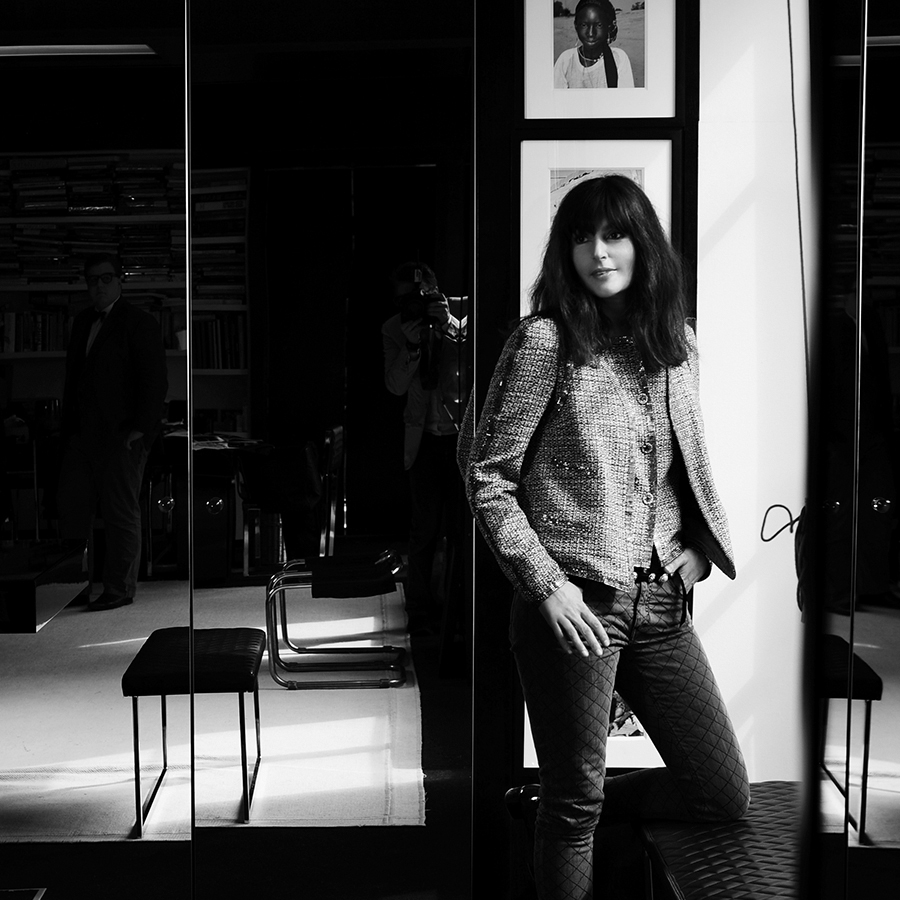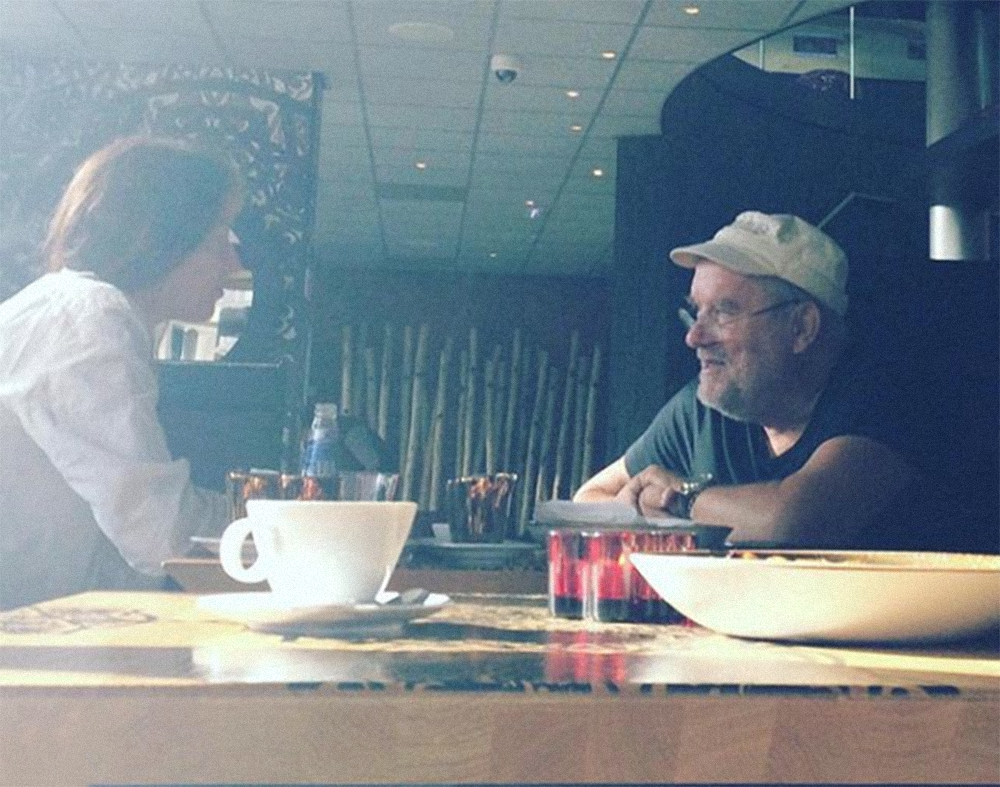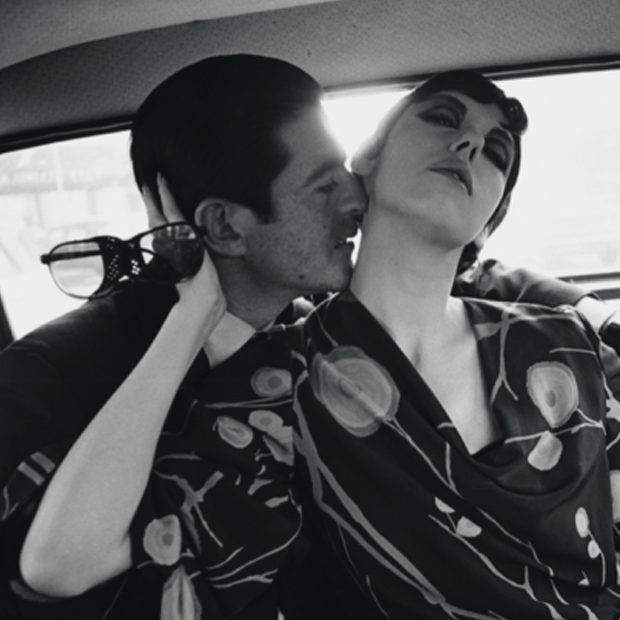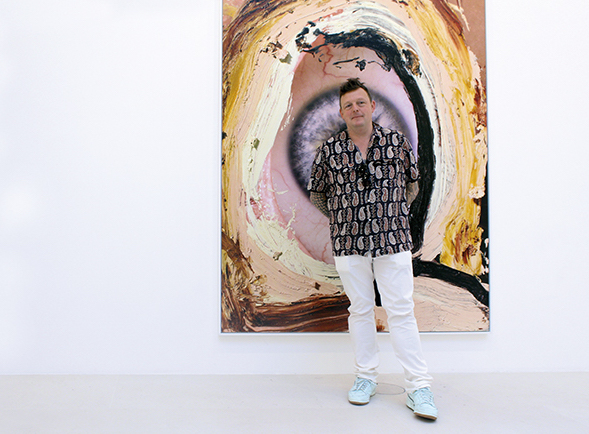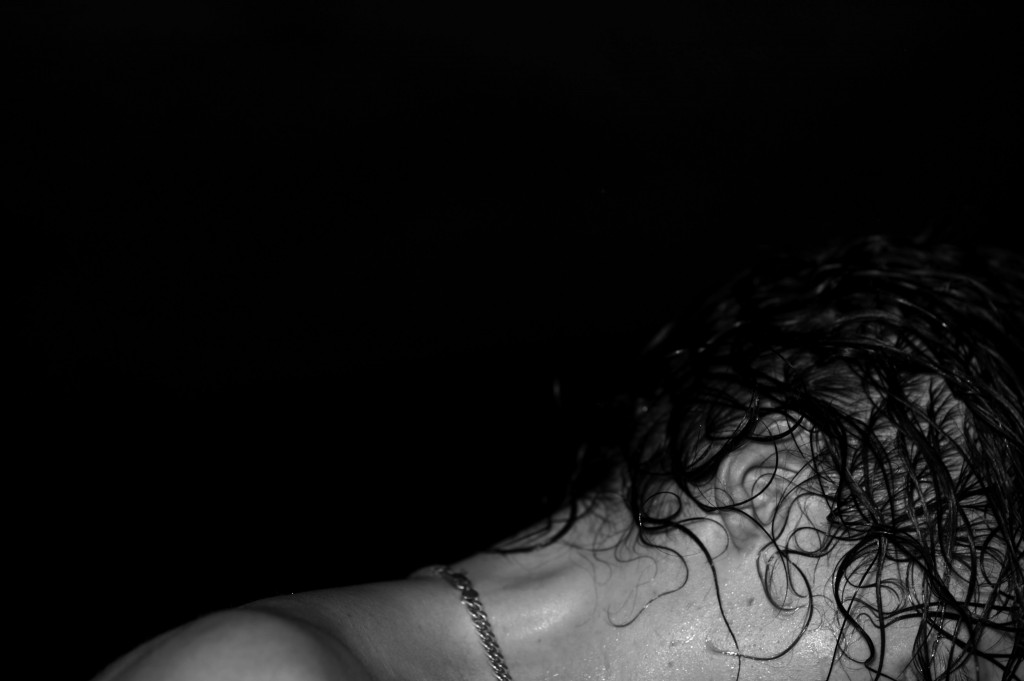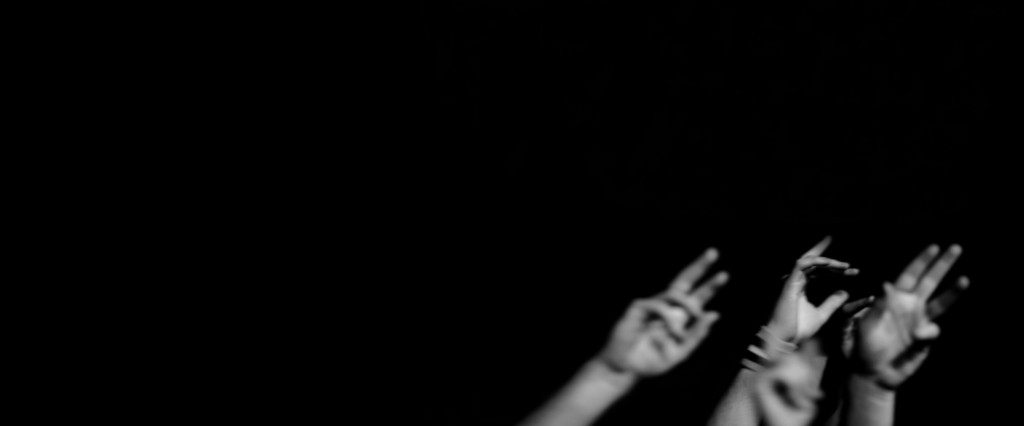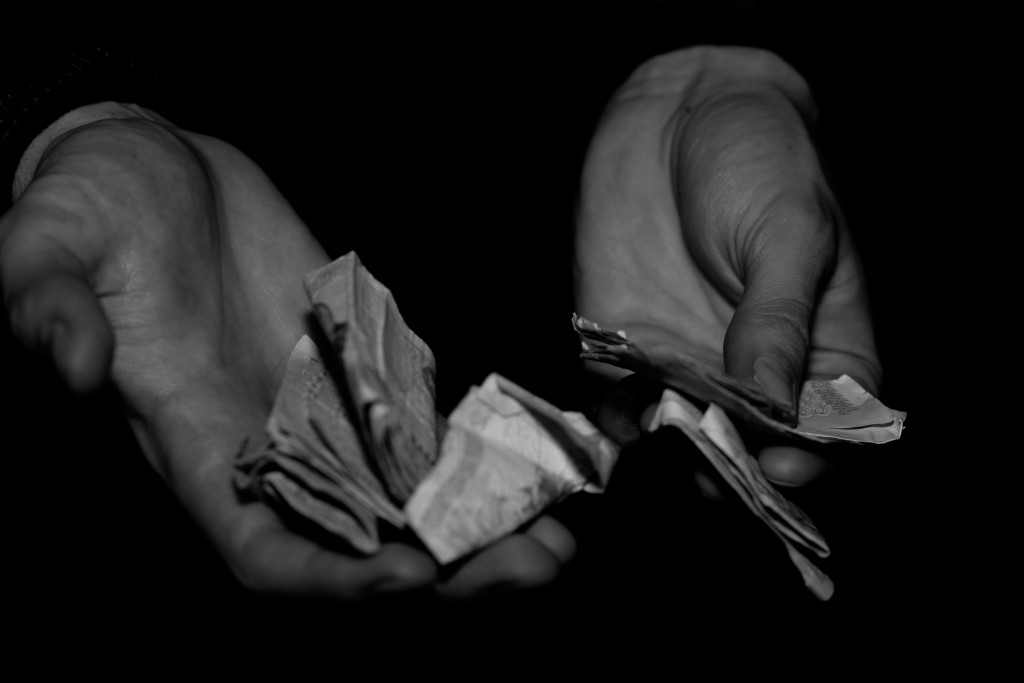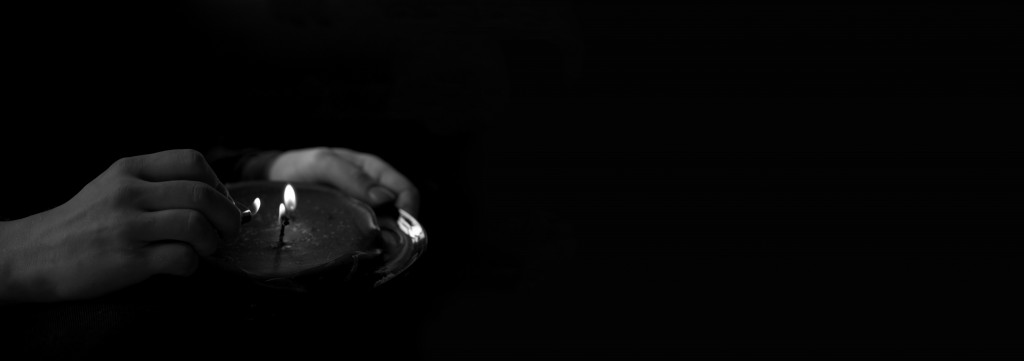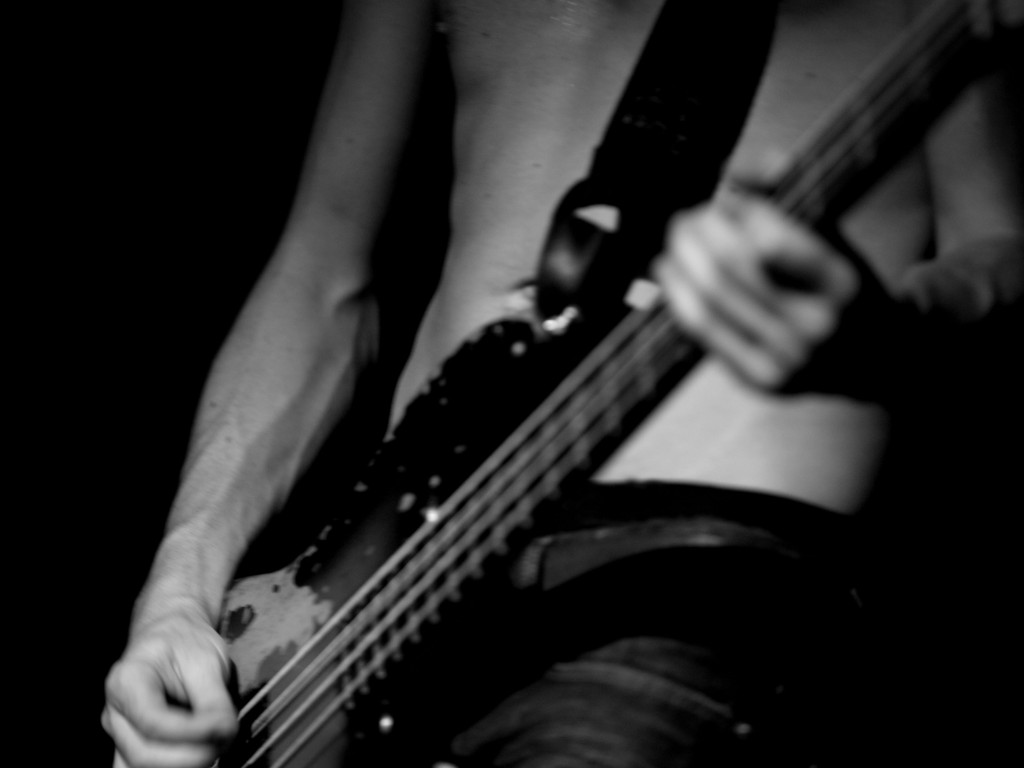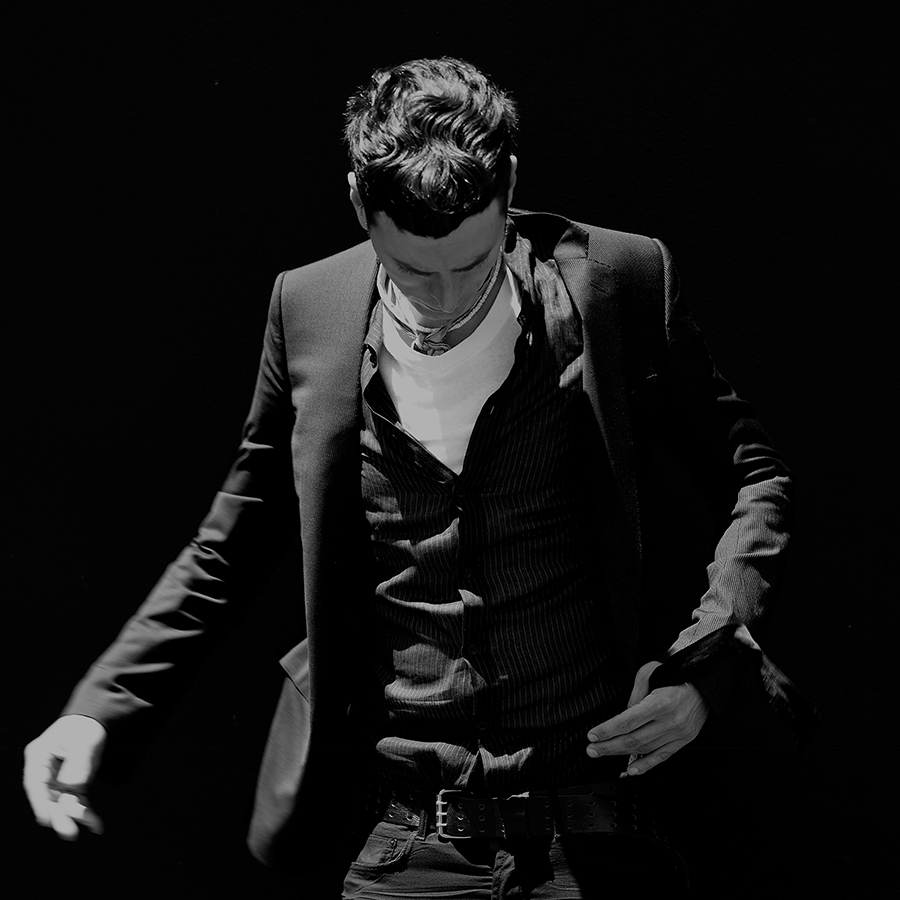
HEDI SLIMANE, A MEETING WITH FRANK PERRIN & ARMELLE LETURCQ
By Crash redaction
INTERVIEW HEDI SLIMANE ON PHOTOGRAPHY
Following the breaking news of this morning of Hedi Slimane leaving Saint Laurent, we take a look back at our interview with the talented artist and designer when he talked to Armelle Leturcq and Frank Perrin about photography, art, and the rock generation.
How did you arrive at photography?
I started when I was eleven. Photography came before everything else I have done. Fashion only came into it later. In fact I never thought of it as anything other than a way of referring to everyday things. Boredom, sometimes, particularly right at the beginning, was my one and only subject. A deserted house, and broken branches. My first photo, probably. It seems fairly unlikely. So it was the first thing you did? Yes – the first thing I did, and it was fairly organic. Then I did portraits of my friends. I’ve kept almost everything. Recently, Purple edited some of the photos for Interzone, a little book I did for them, based on a short story by W. Burroughs. Some of the portraits were done in 1988. I realised that my photos haven’t changed all that much, although the cameras have evolved considerably. I started with a Nikon FM that took a long time to be able to buy. I used to wander along the Boulevard Beaumarchais looking at the second-hand shops, and one day, for my birthday, I bought it. It was really sturdy, and completely mechanical. That was in 1981. Later, when I was 19 or 20, I had to sell a drawing I had wangled out of Keith Haring to be able to buy a Teufel enlarger. I had started printing at my school’s photo club, and I really enjoyed doing that. I found an old German enlarger with a Zeiss lens. I used to do all my printing in the darkroom of a small laboratory in Paris. I stopped all that when I started doing collections. I don’t know what happened to the enlarger. Fifteen years later, then, at the Kunstwerke in Berlin, where I was in residence in 2000, and its curator Klaus Biesenbach, who’s at the MOMA now, commissioned me to do a project to mark the end of my residence. That’s how Berlin came about and I fished out my old photos to use in a video installation to start with; it was edited later by Steidl/7. It then went off to PS1 in New York, and then to Koyanagi in Tokyo, finally ending up in the new museum of contemporary art in Luxembourg.
You started in a fairly intuitive way with the books BERLIN, then STAGE, and then LONDON: BIRTH OF A CULT. It’s interesting the way things come about – it reminds me of the way William Klein, for example, produced his book on New York. He had to come back to New York because of the war and he thought he would photograph Americans as if they were savages, or Indians, as if he didn’t know the continent at all. His first book came about like that, like a kind of meeting point, rather like you with Berlin. You have always worked in black and white?
Well yes, I always have. Probably because I used to develop in black and white. In fact I never learned how to use a colour enlarger, although I’ve got nothing against colour as such. What I find interesting is that black and white considerably reduces the actual photographic effect in the first meaning of the word. It’s a short cut. For the last two books, STAGE and BIRTH OF A CULT, the question didn’t really arise. Black and white is probably a convention, a sign, or an archaism connected with the world of rock performance. As for William Klein and the idea of taking photographs as if there were a distance, it’s essential. It’s an initiation. You’re always observing, with the idea of describing some kind of Neverland. How do you work? I take photos the way some people keep a diary – everyday things, the people around me, my projects, and keep them like payers of sediment. Then comes the idea of representation, or the transposition of an image. It depends on what’s interesting. Since the time I did my own printing, I’ve thought about it a lot, and about the display. I can’t imagine separating the subject from the medium and the surface. There’s also the idea of movement and its evocation – its simulation, in a way. Like still shots from a film (Fragmentations compared with As Tears Go By). That’s true of fashion, too, in fact. Lastly – and it’s essential – I also think about the possible links and correlations between architecture and photography, about alignments, about the portrait in relation to the notion of a frame, perspective and depth of field.
Dan Graham, with his work ROCK IS MY RELIGION, was one of the first artists to deal with rock music in art and to put his finger on its religious aspect. But his work is connected with the Seventies scene. At the moment there is a resurgence of a certain type of radical rock music, and you were the first to reveal it. Do you consider your work to be a witness of the age we live in? Does this new scene represent for you a real renewal or is it more of a revival?
It started from nothing, with a very small group of musicians and fans, playing in small improvised halls in Detroit and London, then these micro-scenes turned into a real avalanche. It has to be symptomatic. The connection with 77 and 78 in London is fairly obvious in the form, but for its content the new scene functions according to its own landmarks – outside the protest movement, in fact, and more in line with a neo-romantic fashion. So it’s anything but a revival. In fact most of it has happened on the Internet, in the shadow of the policy of the majors, which it totally out of touch, in direct relation with the new fan-clubs, often on MySpace. It’s completely new, of course. I was sucked into the movement, probably right from the start and more or less by accident, by working on early scenes, from the Libertines to Franz Ferdinand, and lots of other bands. Right from the start, and for more than four years now, I’ve kept a record of the scene, and I published the first book on that generation (STAGE), then a second on the new scene in Britain, LONDON: BIRTH OF A CULT. The Liberation special was probably fairly decisive too, and I’m constantly filing away the memory that has become the memory of a generation totally at one with the movement. At the same time I started the first exhibitions on the mechanism and the renewal of the new style of rock performance.
Is there a degree of nostalgia in your work? Your photos remind me of the Eighties.
Probably a sort of melancholy in relation to my pre-adolescence, but there again it involves keeping a record of everything that happens to me.
How do you feel about your first solo show at the Almine Rech gallery? Why did you choose to reproduce a space in that way?
That’s more or less how I operate. Mapplethorpe was an example. At the Almine Rech gallery I’ve defined a liturgical space that symbolises the ritual of a rock performance. I felt that the aspects of initiation and dogma of the scene are signs that are symptomatic of the age we live in. In fact, I’ve just finished a group show in Munich at the Sprüth Magers Lee gallery, which probably served as a preparatory exercise. The show was called “Thank you for the music”. Some of the pieces on display at the Almine Rech gallery are connected with my first book, STAGE, and more particularly with those metaphorical portraits of rock stars – indirect portraits. There’s an illusory, fetishist reconstitution of the Libertines, with shots of Pete Doherty and Carl Barat put together in the form of “breathing assistance”, or reliquaries. The new London scene wouldn’t exist without the sacrifice of a band that has already achieved myth status. It’s a starting point, the birth of an ideal and no doubt a statement – Jimmy Hendrix believed that some groups were born to die. So this show is all about the canonisation of rock musicians, about the fans, above all, and about the process of identification. The main item was on stage diving, and experimenting with it – it’s a significant ritual in the rock music microcosm.
How do you feel art circles perceive the fact that you are both a fashion designer and a gallery exhibitor?
There’s probably a very French rule of some kind that says you can only be one thing at a time. Outside France nobody even thinks about it. It’s a sort of collective arrangement, with prejudices all over the place. Photography is in fact a medium like any other. It’s like speaking a number of languages – it’s got nothing to do with meaning.
It’s true that the universe is totally universal – music, adolescence, arranging fashion shows and art shows.
Yes – it’s the same language. It’s always the same descriptions, in fact.
I wonder, since the early Sixties, if there isn’t some frustration in French art circles that raises problems if your whole life isn’t devoted to art?
It all lies in the distance an artist is supposed to put between himself and the world about him, which would prevent him from participating otherwise. This “safety lock” is an ethical protection – in France, at least – and constitutes a sort of definition. The question in fact is “what constitutes and defines an artist and an artistic process?” Do you have to be an artist? Is the art gallery the sacred and exclusive territory for artistic expression, or a sort of everyday marketplace? There’s also the more prosaic concept of the art market, in opposition to the closed circuit of public commissions, and the problem of including the concept of private collections and foundations. It’s all changing quite considerably at the moment, thank God. We’re not in the regional aspect any more, and we’re emerging from the mould of the Eighties.
Is there a kind of fascination or attraction on the part of fashion for contemporary art?
Quite the opposite; I feel fashion is being integrated into art and there’s an organic correlation. Quite a few artists have integrated fashion into their work. Fashion is becoming an area of what is possible, an area for transformation, and nowadays it occupies a reconstituted perimeter. The birth of contemporary forms of “branding”, as defined at the end of the Nineties, is making artists think about the meaning of fashion. I remember an exhibition by Sylvie Fleury that got a really bad press in Paris in the early Nineties. Nobody gives it a thought these days. There were more later. Philip-Lorca di Corcia, Vanessa Beecroft, Mariko Mori, Murakami, and so on, have all made it more ordinary. It’s not so much a fascination as a dialogue. You probably feel less tenseness in other countries. Historically and culturally, fashion is so important for Paris. On another point, the end of the second millennium is not just anecdotal. We are witnessing the birth of the “all-contemporary”, a sort of dizziness of everything contemporary in a utopian form, a need to develop a vocabulary of a different kind, a vocabulary for this first decade that can’t work out where it stands. That’s also true of architecture and design. For instance, do you have to be a collector? Nothing is supposed to be important except contemporary art. It’s probably a generation break as well.
Why were you chosen as curator of a Mapplethorpe exhibition at the Thaddaeus Ropac gallery?
Mapplethorpe didn’t mean much to me at the start, in fact – or rather, I wasn’t receptive to a certain idea of Mapplethorpe. Thaddeus Ropac and the Mapplethorpe Foundation asked me to be part of the project. Before Paris, Cindy Sherman in New York, and David Hockney in London had worked with the Foundation on the same subject. In the end I agreed and started looking at pieces that the institutions considered to be totally minor, and even anecdotal. It meant redefining the frontiers between major and minor, kept in place by an over-institutional, museum-based vision of an artist’s work – of Mapplethorpe’s work in this case. It’s true of lots of other artists, and that was precisely the idea or meaning behind the exhibition. In terms of form, I transposed my display method, the one I have developed for my own work, starting with bare framing in a glass case, and random compositions. I also felt it was important to put sculpture and photography into perspective. Mapplethorpe’s modelling, in an almost academic style of photography for portraits and still lifes, seemed to me to bring him closer to what he had done first – sculpture – which was always belittled in his day. Personally, I don’t see how you can separate the two.
Interview by Armelle Leturcq and Frank Perrin from Crash 37 Spring 2006.








